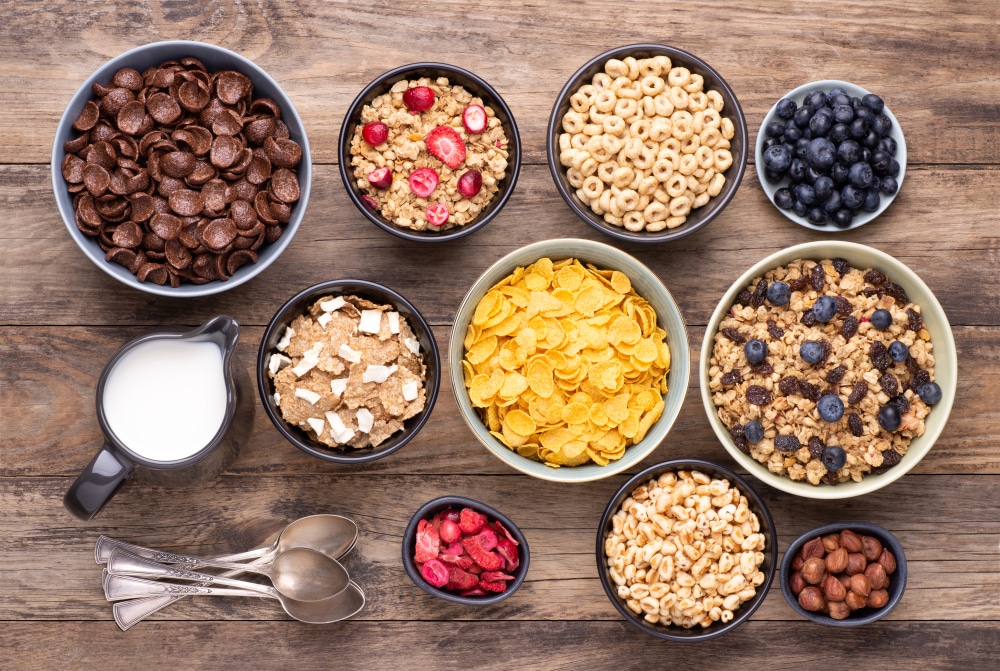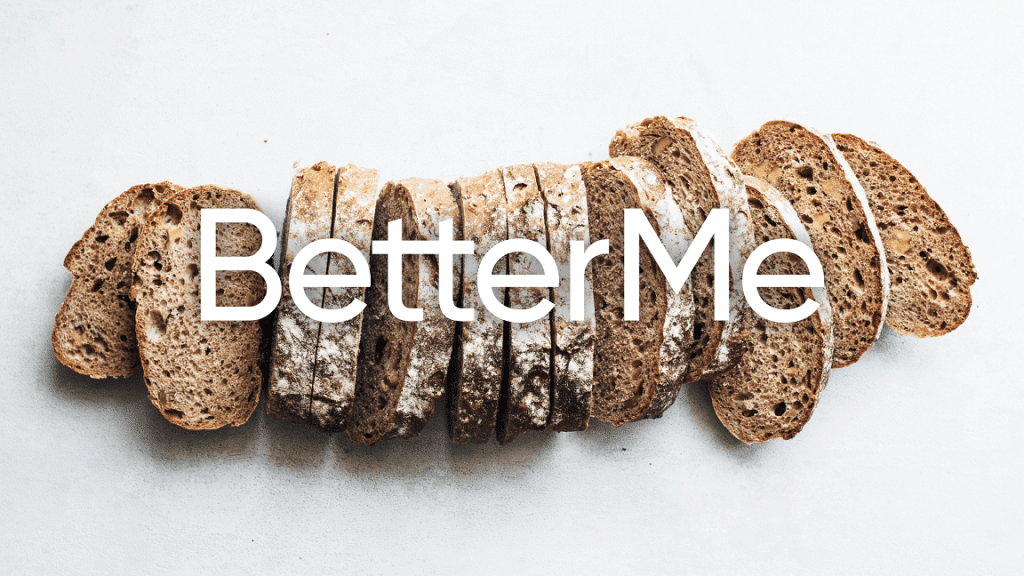The right breakfast is important to your health as well as your day. Some people prefer a light, low-calorie meal in the morning, while others need something with more substance that will keep them satisfied for hours. The way you feel at the end of the day can in part depend on what you ate for breakfast.
Get your personalized
meal plan!
When it comes to choosing high fiber cereal, there are many options available, and some considerations must be made before purchasing any kind of cereal. This article will discuss how to choose a good high-fiber cereal and what benefits can come from eating this type of food in the morning.
Best High Fiber Cereal List
Cereal doesn’t have to be an unhealthy breakfast option that’s laden in sugar and low in nutrition.
Here are some of the best high fiber cereals you can choose from:
Wheat Bran Cereal
Wheat Bran cereal is a type of high fiber cereal that contains a good amount of protein, vitamins B and E, folate, iron, magnesium, and phosphorus. It’s also rich in dietary fiber and is believed to help prevent cardiovascular disease as well as some cancers (13). Wheat bran is often eaten with milk or fruit juice.
Wheat Cereal Biscuits
Wheat cereal biscuits are another great option for those looking for high-fiber breakfast options. These biscuits are made from whole wheat flour, which is an excellent source of energy-providing carbohydrates. The texture is much softer than that of regular wheat cereals; they’re usually eaten dry or used in baking sweet treats like muffins, cakes, and other baked goods. This is because high-quality whole wheat biscuits are devoid of any added sugar or salt, which can be very beneficial for those trying to lose weight.
Shredded Wheat Pillows
For those who enjoy sweet breakfast foods, shredded wheat pillows are another great choice. They’re made from whole grains that are slow-baked into pillow shapes while being infused with real fruit juice. The added fruit juice provides a natural source of sweetness while also adding vitamin C to the diet. A single serving contains few calories while also being high in fiber content.
One 100 gram serving of shredded wheat pillows contains about 12.4 grams of dietary fiber, making it an excellent way to get your daily intake without actually having to eat another meal (1).
Bran Flakes
Bran flake cereal is another great choice for those looking to increase their fiber intake. It’s made up of coarsely ground wheat, rice, or oat bran and sweetened with sugar. Bran flakes are packed with B vitamins as well as iron, zinc, magnesium, and calcium.
Oatmeal
Another healthy breakfast option that can be used to gain more dietary fiber is oatmeal. Oats are one of the healthiest grains known to man due to being high in protein, Vitamin E, Iron, and Dietary Fiber. A ⅓ cup serving contains about 3 grams of dietary fiber, which can help reduce bad cholesterol levels and help regulate bowel movements (11).
Muesli
In addition to high fiber cereals, Muesli is another great choice. Muesli is a type of cereal that contains oats, so it’s packed full of protein and dietary fiber while also being low in fat. It contains vitamin E, which may help prevent heart disease, while also adding calcium, so you’ll be getting your daily intake while still feeling satisfied after eating breakfast.
Read More: High-Fiber Foods Chart: What To Eat To Ensure You’re Getting The Recommended Daily Amounts Of Fiber
What Are The Health Benefits Of Fiber?
Having a high fiber cereal for breakfast every day has the following benefits:
Stable Blood Sugar
Dietary fiber can help regulate blood sugar levels (12). It slows down the absorption process of food by absorbing water as it travels through our digestive system. This results in a gradual rise in blood sugar levels after eating instead of a sudden spike after consuming sugary foods. If you are diabetic, this is important because it regulates your body’s insulin release to maintain healthy glucose levels throughout the day.
By slowing down how quickly glucose enters your bloodstream, dietary fiber also ensures that you get a steady supply of energy and prevents the “sugar crash” that many people experience after eating sugary foods.
Lower Levels Of Bad Cholesterol
Dietary fiber can also help lower cholesterol levels by displacing fats and sugars in your diet (2). Dietary fiber absorbs water and becomes gel-like during digestion, which helps bind with bile acids and cholesterol to push them through the digestive system to be excreted. Increasing your fiber intake may help lower blood cholesterol levels and prevent cardiovascular disease.
Weight Management
Studies show that diets higher in fiber lead to greater weight loss when compared to low-fiber diets (3). This is because dietary fiber reduces hunger and increases satiety. By binding with water, dietary fiber bulks up stools which will fill you up faster, making you feel full for longer periods (5). This means people who consume diets high in dietary fiber are less likely to snack between meals, saving them on the number of calories consumed per day. Research shows that people who eat foods high in fiber gain less weight over time than those whose diets are low in fiber (9).
Better Bowel Management
Since dietary fiber absorbs water during digestion, it helps prevent constipation by creating bulkier stools that are eliminated more easily (8). Eating plentiful amounts of dietary fibers can help reduce or even eliminate chronic constipation that is a common problem (6).
In addition, dietary fiber may also help to prevent or manage irritable bowel syndrome (IBS). IBS affects up to 20% of the population and results in abdominal pain, cramping, bloating changes in bowel habits, and other issues. Dietary fiber can reduce symptoms because it helps increase stool bulk and decrease intestinal transit time – making stools easier to pass through the digestive tract (4).
If you’ve mustered up the courage to crush your weight loss goal, let Betterme take the sting out of this demanding process. Our app will help you restructure your habits, remold your life and crank up your fitness results!
How To Choose The Right High Fiber Cereal For Breakfast?
The first consideration when buying any kind of cereal is whether or not it has enough nutritional value for your needs. Cereals vary greatly in how much fiber they contain, from around 0-10 grams.
For a single serving to be considered high fiber cereal, it should have at least 5 grams of dietary fiber per serving. Anything with less than 5 grams will provide you with some extra nutritional benefits but may not get you the desired effect of having a healthy breakfast that keeps you regular.
Another thing to look for in a high fiber cereal is how much sugar and other additives are used in making it. When any food has too much sugar added to it, this often results in the high consumption of empty calories that will likely lead to weight gain over time (10). Look for cereals that have added sugars listed on the nutrition label so you can reduce your consumption of these types of foods. If the cereal has little nutritional value, why would you want to eat it?
Finally, consider the ingredients used in making the food. This is very important if you are trying to avoid certain types of foods or if you have allergies (7). If you need to avoid gluten, for example, this will be noted on the label, so you know that that particular type of cereal should not be consumed by anyone with this intolerance. People who cannot consume dairy products should look for high-fiber cereal that does not contain whey as an ingredient.
The Bottom Line
Having a healthy high-fiber cereal is the right way to start your day. Get between 5-10 grams of dietary fiber per serving and stick to cereals without too much added sugar. Finally, if you have allergies or intolerances to certain types of foods, such as gluten, be sure the cereal you choose does not contain ingredients that will make you sick.
DISCLAIMER:
This article is intended for general informational purposes only and does not address individual circumstances. It is not a substitute for professional advice or help and should not be relied on to make decisions of any kind. Any action you take upon the information presented in this article is strictly at your own risk and responsibility!
SOURCES:
- Cereal (Post Shredded Wheat) (2010, fdc.nal.usda.gov)
- Cholesterol-lowering effects of dietary fiber: a meta-analysis (1999, academic.oup.com)
- Dietary Fiber and Weight Regulation | Nutrition Reviews | Oxford Academic (2001, academic.oup.com)
- Dietary fiber in irritable bowel syndrome (Review) (2017, ncbi.nlm.nih.gov)
- Dietary fibre and satiety (2007, onlinelibrary.wiley.com)
- Effect of dietary fiber on constipation: A meta analysis (2012, ncbi.nlm.nih.gov)
- Food Allergies (2021, fda.gov)
- Health benefits of dietary fiber | Nutrition Reviews | Oxford Academic (2009, academic.oup.com)
- Increasing Total Fiber Intake Reduces Risk of Weight and Fat Gains in Women (2009, academic.oup.com)
- Nutrition and health. The issue is not food, nor nutrients, so much as processing (2009, cambridge.org)
- Oatmeal, multigrain, no added fat (2020, fdc.nal.usda.gov)
- Therapeutic effects of soluble dietary fiber consumption on type 2 diabetes mellitus (2016, ncbi.nlm.nih.gov)
- Wheat bran: its composition and benefits to health, a European perspective (2012, ncbi.nlm.nih.gov)












